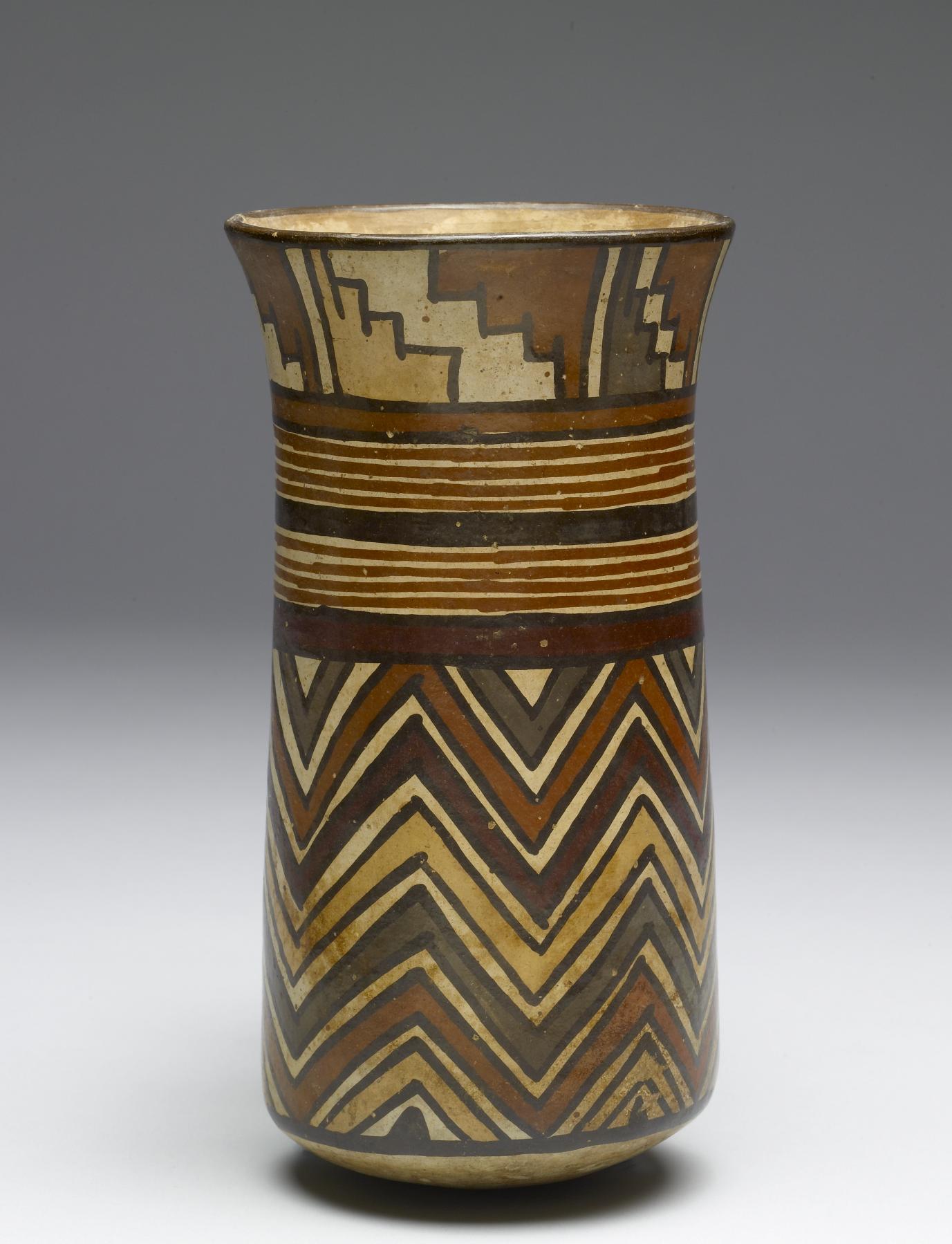Libation Vessel (Qero)
(Ancient Americas )
Nazca ceramic artists excelled in painting dynamic imagery using a wide variety of slip-paint colors. They preferred relatively unencumbered vessel surfaces, so that the paintings flow across the ceramic object. Many images are those of deities or iconic references to religious ideology. In other instances, it is clear that the reference is cloth, a highly valued commodity throughout the Andean world. The energetic geometric patterns on this tall Nazca vessel, which dates to the end of the Early Intermediate Period (ca. 550 - 650 CE), have their counterparts in textiles that have survived in the dry southern coastal deserts as well as in painted renderings of clothed figures depicted on pottery. Nazca textile artists were masters of a variety of weaving techniques, including brocade, tapestry, and the difficult and time-consuming discontinuous warp-and-weft method.
Provenance
Provenance (from the French provenir, 'to come from/forth') is the chronology of the ownership, custody, or location of a historical object. Learn more about provenance at the Walters.
Vincent Price Collection. Ron Messick Fine Arts, Santa Fe, New Mexico; purchased by John G. Bourne, between 1990 and 1999; given to Walters Art Museum, 2013.
Exhibitions
| 2018-2019 | Transformation: Art of the Ancient Americas. The Walters Art Museum, Baltimore. |
| 2012-2013 | Exploring Art of the Ancient Americas: The John Bourne Collection Gift. The Walters Art Museum, Baltimore; Frist Center for the Visual Arts, Nashville. |
Geographies
Peru, South Coast (Place of Origin)
Measurements
H: 7 7/8 x Diam: 4 3/16 in. (20 x 10.67 cm)
Credit Line
Gift of John G. Bourne, 2013
Location in Museum
Not on view
Accession Number
In libraries, galleries, museums, and archives, an accession number is a unique identifier assigned to each object in the collection.
In libraries, galleries, museums, and archives, an accession number is a unique identifier assigned to each object in the collection.
2009.20.90




